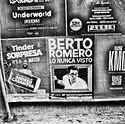sanking
Member
Phil and Sandy, you don't need an acid paper; the sensitizer itself is acid enough. You need non-buffered / de-buffered / neutral paper - which is also free from other contaminants that may damage the printing process...
Regards,
Loris.
That may indeed be the case. However, I have not seen any adverse effects from simply drying the paper after the pre-soak acid bath and using it as is. If I had to wash the paper after the acid bath I would probably reconsider if the extra step was worth my time and trouble. I have a fairly small work space and washing and drying large sheets of art papers is already a fairly onerous task as is!!
Sandy






 . Trying some bfk yesterday, I noticed the paper both untreated and treated in 1.5% oxalic was much more difficult to clear than the sheets treated in 5% citric acid. The unexposed sensitizer hung on through 3 citric acid clearing baths on the untreated and oxalic treated paper while the citric acid treated paper cleared immediately in the developer. Anyone else observed citric acid treatment making papers easier to clear? Makes me wonder if certain acid treatments are more compatible with certain developers and clearing baths.
. Trying some bfk yesterday, I noticed the paper both untreated and treated in 1.5% oxalic was much more difficult to clear than the sheets treated in 5% citric acid. The unexposed sensitizer hung on through 3 citric acid clearing baths on the untreated and oxalic treated paper while the citric acid treated paper cleared immediately in the developer. Anyone else observed citric acid treatment making papers easier to clear? Makes me wonder if certain acid treatments are more compatible with certain developers and clearing baths.